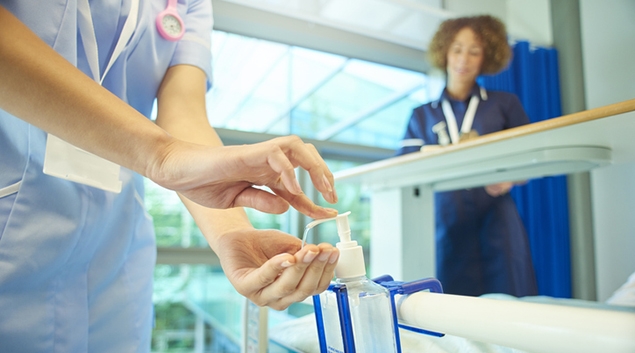
The U.S. Department of Health and Human Services through the Health Resources and Services Administration has announced approximately $ 3 billion in funding to hospitals working on thin margins which serve a large percentage of vulnerable populations.
HHS expects to distribute the $ 3 billion across 215 acute care facilities, bringing the total payments for safety net hospitals from the Provider Relief Fund to $ 12.8 billion for 959 facilities.
It is also giving another $ 1 billion to specialty rural hospitals, urban hospitals with certain rural Medicare designations, and hospitals in small metropolitan areas.
HHS estimates the funding will provide relief to 500 rural hospitals. The payments range from $ 100,000 to $ 4,500,000 for rural designated providers and $ 100,000 to $ 2,000,000 for the other providers.
An unspecified amount will go to dentists who apply for relief.
WHY THIS MATTERS
HHS recognizes the need these funds play in supporting providers facing financial devastation caused by the pandemic.
The money is being distributed from the $ 175 billion Congress appropriated in the CARES Act and the Paycheck Protection Program and Health Care Enhancement Act.
“We’re drawing from that spending authority,” a senior HHS official said Friday.
Of the $ 175 billion, an estimated $ 115 billion has been allocated.
The first $ 50 billion went to all providers that serve patients in the Medicaid program. Another $ 12 billion went to hospitals in hot spots; $ 10 billion to rural hospitals; $ 10 billion to safety net hospitals; about $ 5 billion skilled nursing facilities; and about $ 500 million to tribal health facilities.
Another $ 40 to $ 50 billion has been set aside to pay for coverage of uninsured patients for COVID-19 care. But HHS has only made payments of $ 340 million so far for claims providers have submitted for testing and treatment of the uninsured.
“That’s less than what we had expected to distribute,” the official said. “We’re relying on providers to submit claims for the uninsured.”
The next allotment will be for the next wave of hotspots.
THE LARGER TREND
On June 9, HHS announced plans to distribute $ 10 billion in Provider Relief Fund payments to safety net hospitals. It learned some acute care hospitals did not qualify for funding from this initial announcement.
HHS is now expanding the criterion for payment qualification so that certain acute care hospitals meeting the revised profitability threshold of less than 3% averaged consecutively over two or more of the last five cost reporting periods, will now be eligible for payment.
In May, HHS announced $ 10 billion in funding to almost 4,000 rural healthcare providers including hospitals, health clinics, and health centers.
HHS is expanding that existing payment formula to include certain special rural Medicare designation hospitals in urban areas as well as others which provide care in smaller non-rural communities. These may include some suburban hospitals that are not considered rural but serve rural populations and operate with smaller profit margins and limited resources than larger hospitals.
In June, HHS announced the launch of the Enhanced Provider Relief Fund Payment Portal where eligible Medicaid, Medicaid managed care and CHIP providers were the first to begin reporting their annual patient revenue information for funding. This portal and application process is now open to dentists who may not have previously been eligible to receive funding through the Provider Relief Fund.
Eligible dentists will receive a reimbursement of 2% of their annual reported patient revenue and will have until July 24 to apply for funding through the Enhanced Provider Relief Fund Payment Portal.
This second phase of general distribution will continue to expand to include other providers submitting applications for future relief funding opportunities or as directed by HHS.
WHAT ELSE YOU NEED TO KNOW
The Centers for Medicare and Medicaid Services has also announced the agency’s targeted approach to provide additional resources to nursing homes in coronavirus hotspot areas.
Specifically, CMS plans to deploy Quality Improvement Organizations across the country to provide immediate assistance to nursing homes in the hotspot areas as identified by the White House Coronavirus Task Force. QIOs are CMS contractors who work with healthcare providers to help them improve the quality of healthcare they provide to Medicare beneficiaries.
In addition, the agency is implementing an enhanced survey process tailored to meet the specific concerns of hotspot areas and will coordinate federal, state and local efforts to leverage all available resources to these facilities.
The purpose of these efforts is to target facilities with known infection control issues. Additional resources are needed to ensure nursing homes take proactive steps to enhance infection control policies and practices to limit potential transmission and prevent widespread outbreaks within these facilities, CMS said.
ON THE RECORD
“We’ve been distributing the Provider Relief Funds as quickly as possible to those providers who have been hardest hit by the pandemic,” said HHS Secretary Alex Azar. “President Trump is supporting hospitals in continuing to provide COVID-19 care and returning to everyday procedures, especially hospitals that serve vulnerable and minority populations. Close work with stakeholders informed how we targeted this new round of funds to hard-hit safety-net and rural providers.”
Twitter: @SusanJMorse
Email the writer: susan.morse@himssmedia.com
